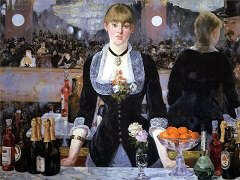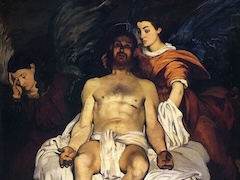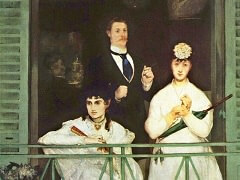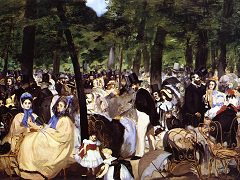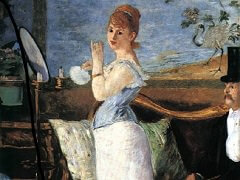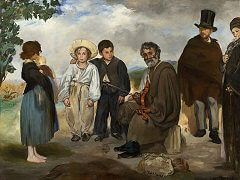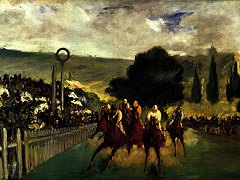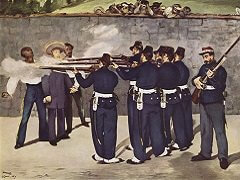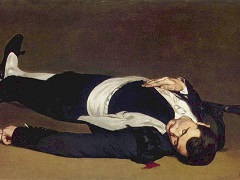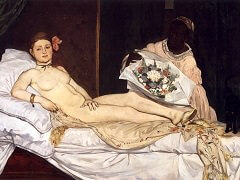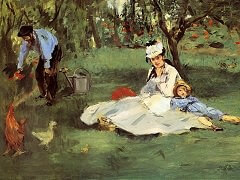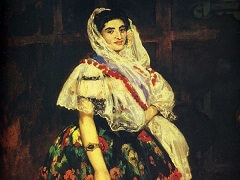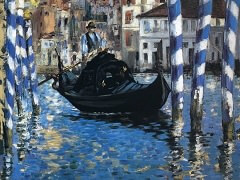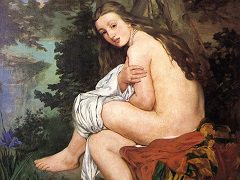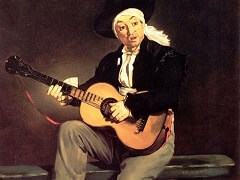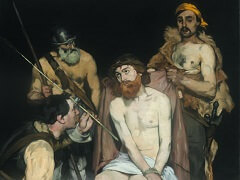Woman with a Parrot, 1866 by Édouard Manet
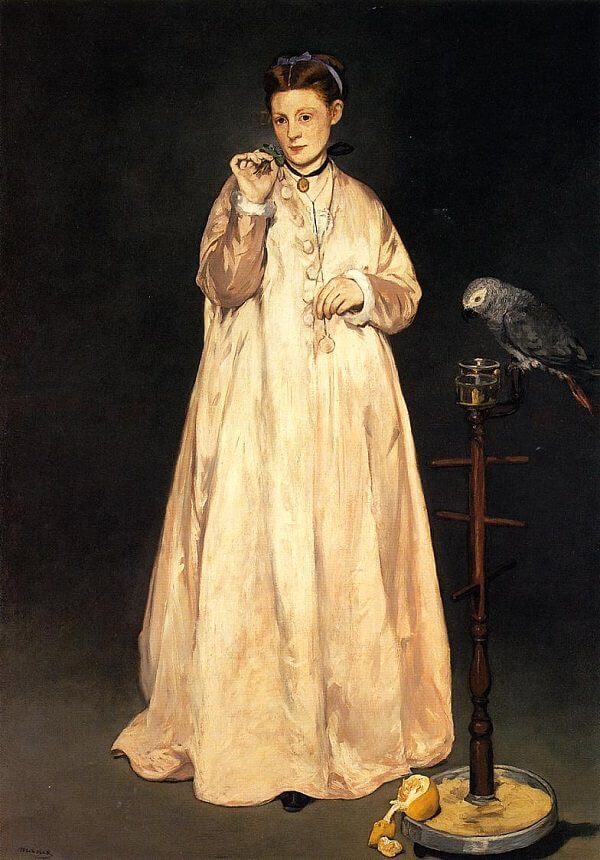
In this painting, Manet seems to return to his earlier manner. The woman is painted against a midnight-blue background, and her studied, somewhat affected pose is slightly reminiscent of certain full-length portraits by Whistler. The textures, the fruit that has dropped from the perch, the reddish hair, even the woman's face, have that French savor and substance of which Gustave Courbet was then the master. This is a curious work, not without charm, from the monocle to the Parma violets. Manet seems to have wished to convey something by it. Victorine Meurend, who posed for it, is wearing the same blue ribbon as in her 1862 portrait.
Singled out by Theophile Thore (who had seen the painting in the wooden hut on the Place de l'Alma, under the title Young Woman of 1866), this work was attacked by Theophile Gautier, who, with his typical love of Renaissance ornamentation, wrote in Le Moniteur of May 11:
This young woman, they say, is painted from a delicate-featured, pretty, and intelligent model, with one of the finest heads of Titian hair that a colorist could wish for. M. Manet's painting of the head must certainly be deliberately unflattering. The features are coarse and ill-drawn, and their unhealthy color bears no relation to the fresh complexion of a young, fair-skinned woman. The dress, of a dubious pink, gives no idea of the body underneath it."
What a faulty judgment! The critics speak of everything, the woman who posed for the picture, her complexion, who she was; of everything, in fact, except the painting itself, the peculiar charm of the style, and the rare modulations and sheen of the colors.

